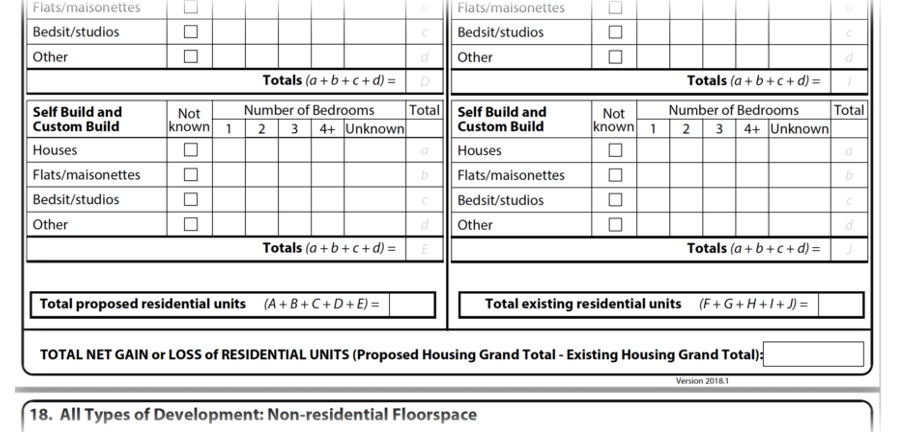NaCSBA welcomes the fact that the Planning Portal’s 1APP planning application form has been updated to include custom and self build homes.
The new form now includes references to custom and self build in relation to the gain, loss or change of residential use section. This provides local authorities with a key tool to track the volume of custom and self-build delivery taking place locally
This is an important change to the form, in that the Right to Build legislation places a duty on councils to grant sufficient permissions to reflect the number of people on the Right to Build registers, which means that monitoring is crucial. Previously, there was no single, uniform means of tracking new custom and self build homes.
The amended form facilitates better data monitoring as it enables councils to track back and maintain a better record of the number of custom and self-build permissions that they’ve granted.
40,000 on the Right to Build registers
Each year NaCSBA conducts a Freedom of Information request about the number of people signed up to the Right to Build registers in England, which recently found that, to date, there are 40,000 people signed up to build. For future requests, it intends to compile data on the number of permissions granted in the future, which should now be easier.
Previously, NaCSBA found that many councils relied on the number of CIL self-build exemption applications for tracking numbers locally, although only applications that have been granted actually count towards the total, as opposed to applications. With regards to this, only 54A projects count, self-build housing for new dwellings to be occupied by the applicant as their sole or main residence.
Other authorities are struggling to measure actual permissions granted, despite good intentions to do so. Having a dedicated area on the form to identify whether a house is a custom or self build will directly remedy this issue, which has been an issue since the legislation was introduced.
Responding to 2018’s Freedom of Information request, one council maintained that some small developers may be undecided on the way they would market small plots at the time of application, which could further complicate the process of monitoring.
The Right to Build legislation
The ‘Right to Build’ places two legal obligations on Local Authorities in England:
- As set out in the Self-build and Custom Housebuilding Act 2015, since April 2016 all Local Authorities in England must keep a register of people and groups of people who are seeking to purchase serviced plots of land in the authority’s area and to have regard to that register when carrying out their functions.
- The Housing and Planning Act 2016 requires all English councils to grant sufficient ‘development permissions’ to meet the demand for Custom and Self Build housing in their area, as established by their register, on a rolling basis. Permissions equivalent to the number of people registering from 1st April 2016 to 30th October 2016 should be granted by 30th October 2019. Permissions equivalent to the number of people registering from 30th October 2016 to 30th October 2017 should be granted by 30th October 2020 and so on. This includes 18,000 permissions by 30th October 2019.
Right to Build Task Force
The Right to Build Task Force is able to offer councils support with custom and self build fulfilment – including in relation to best practice in monitoring. Currently it is offering new local authorities a 50% discount for 2.5 days worth of support on its standard £600 day rate. To find out more fill in an expression of interest form.



